Every time I post Juno the dog in her backpack on TikTok or Instagram, I get flooded with comments and DMs asking where we got it.
Juno wears the Ruffwear Approach dog backpack on all of our backpacking trips, and has for the past five years!
Read on for a full review, plus a packing list and tips for backpacking with your dog.
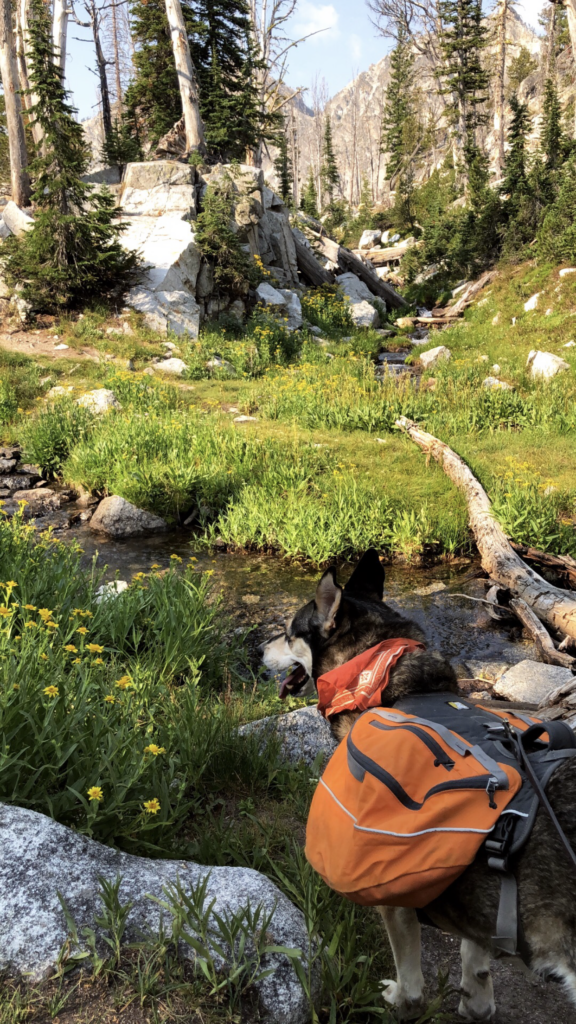
The best dog backpack: Ruffwear Approach Dog Backpack Review
Juno wears the Ruffwear Approach Dog Backpack, which my dad purchased for her before our very first backpacking trip in 2015.
It’s rugged enough to have lasted us over 6 years of seasonal use, with at least two overnight backpacking trips a year. She also wears it on longer day hikes, maybe 10-20 times per year, so she can carry her own snacks, water, and poop.
Juno loves her backpack. You can tell because when she’s all loaded up, she walks with an extra spring in her step. She loves having a job, and seeing the backpack gets her as excited as seeing a squirrel or a jar of peanut butter.
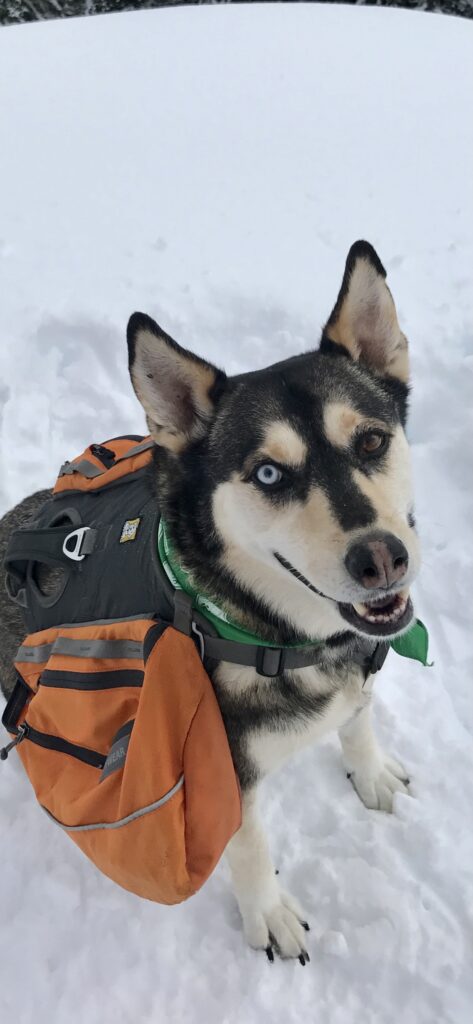
Tips for backpacking with a dog
I love backpacking but I hate leaving Juno home alone, so I’m always looking for dog-friendly backpacking trips.
Some of our favorite dog-friendly backpacking trips so far are the Ediza Lake Loop in the Ansel Adams Wilderness (just off the John Muir Trail,) the Alice-Toxaway Lakes Loop in Idaho, and Titcomb Lakes in Wyoming.
Dogs aren’t allowed in the wilderness of most National Parks, but that still leaves hundreds of thousands of miles of public land for us to explore.
When planning a trip, keep in mind your dog’s fitness level and stamina, especially with a weighted pack. Let your dog practice wearing a weighted backpack on easy day hikes first before you commit to an overnight.
Climate and weather are important details, too. As a husky mix, Juno is very heat-sensitive, so I avoid any trips with her where the weather will be over 75 degrees. When we backpack in the heat of the summer, that means waking up early and start hiking by 7am to beat the heat.
Planning a backpacking trip always involves researching water sources, but backpacking with dogs means taking extra care to plan your route. In many areas, drinking from rivers and lakes can be harmful to your dog, so do your research! Blue-green algae, parasites, and amoebas are common issues. Plan to filter or treat water for your dog the same way you treat your own, and carry plenty of extra water in case your dog gets thirsty.
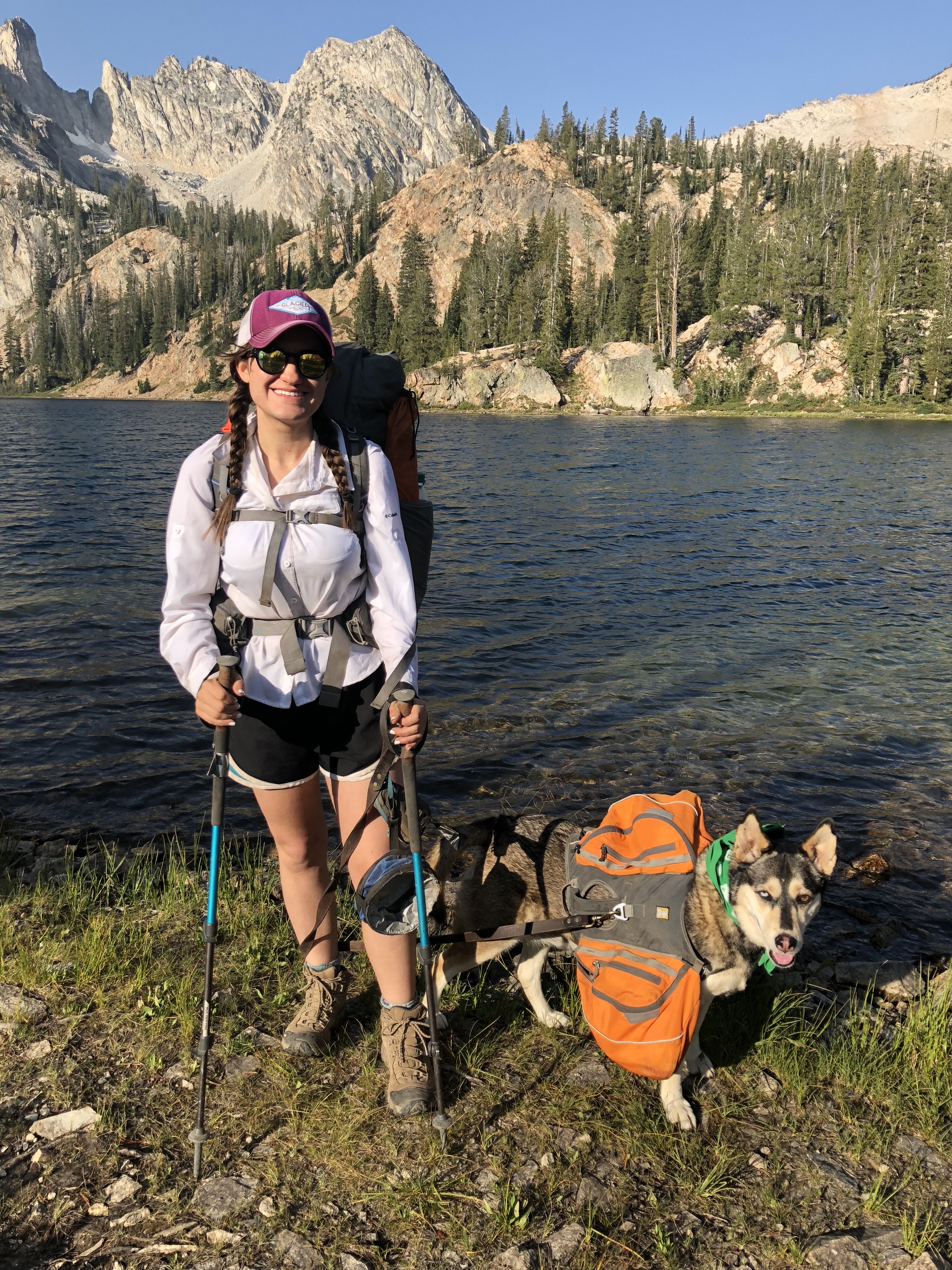
How much weight should a dog carry?
A healthy adult dog can carry about 20-25% of its body weight:
30 pound dog: Max 7.5 pounds of weight
40 pound dog: Max 10 pounds of weight
50 pound dog: Max 12.5 pounds of weight
60 pound dog: Max 15 pounds of weight, and so on.
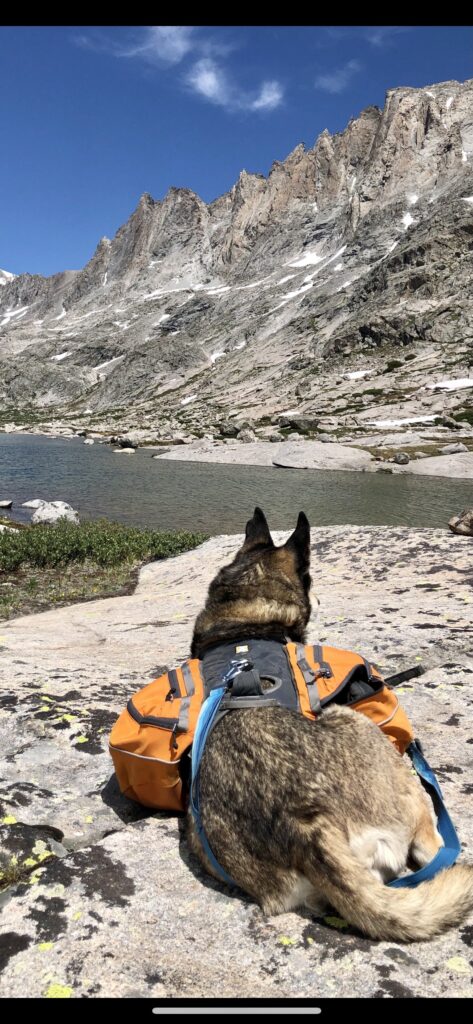
Getting your dog used to the backpack
No matter your dog’s size, start them off with an empty backpack to get them used to the feeling without weight.
Once your dog associates the pack with going outside, they’ll be happy to wear it. (Juno does a happy dance whenever she sees hers, because she knows it means adventure!) Then, you can slowly add more weight on each hike.
Watch your dog carefully for signs of fatigue and adjust as needed. Never give your dog more weight than you could feasibly carry yourself (on top of your own weight,) in case they get injured and can’t wear the backpack anymore.
Juno, a 60-pound husky-shepherd mix, can comfortably carry about 10-12 pounds without slowing down, and has happily carried up to 15 pounds at the beginning of trips. Now that’s she’s a little older, I keep her pack weight around 10 pounds and carefully monitor her for signs of soreness.
The backpack straps should be loose enough for you to fit a finger or two between the straps and your dog’s fur, but not so loose that the pack slides around as they walk.
Make sure to even out the load between the saddlebags, too, especially as your dog eats their food and drinks their water, to avoid any lopsided sliding or soreness.
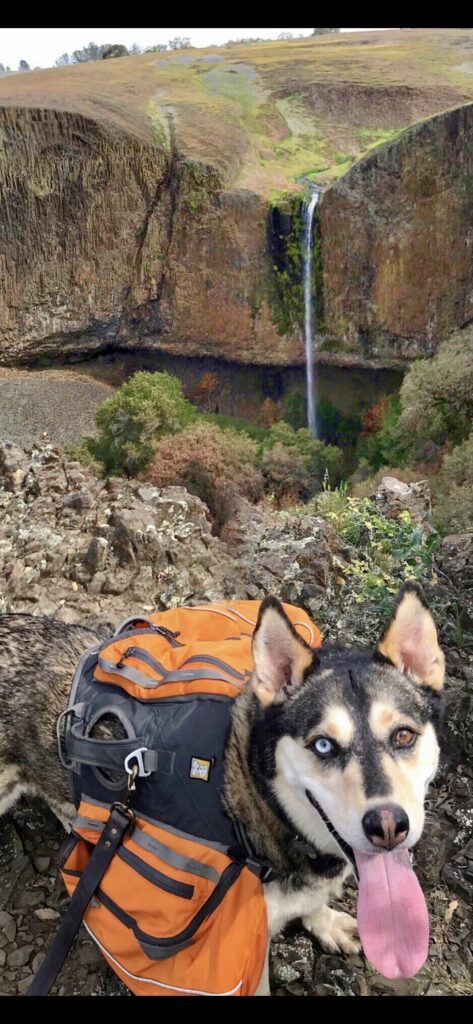
The best dog backpacking gear
In addition to Juno’s favorite hiking and camping gear —including a tick key, collapsible bowl, warm coat, and light-up collar— here are a few items I add for backpacking trips:
Sleeping pad
Juno doesn’t like to sleep with anything covering her, and she’ll wriggle her way out from under a blanket no matter how cold she is. So, I make sure she’s as well-insulated as possible from the bottom with a comfy sleeping pad.
I like the fold-up kind so I don’t have to worry about her slicing open a blow-up pad with her toenails, and also so I don’t have to listen to a blow-up pad crinkling every time she moves in the night.
Down sleeping quilt
Juno doesn’t like being covered while she sleeps, so I put this quilt on top of her sleeping pad to make a cozy, comfortable nest. If it’s less than 40 degrees out, she also sleeps in her winter coat to stay nice and toasty.
Plastic jar to hold dog poop

By far, the best way to control the smell of dog poop! My favorite jars are lightweight plastic peanut butter jars or the Talenti gelato jars with screw-top lids.
Leash with a waist belt
With this leash that clips around my waist, I can hike hands-free and use my trekking poles while still giving Juno enough space to walk in front of me.

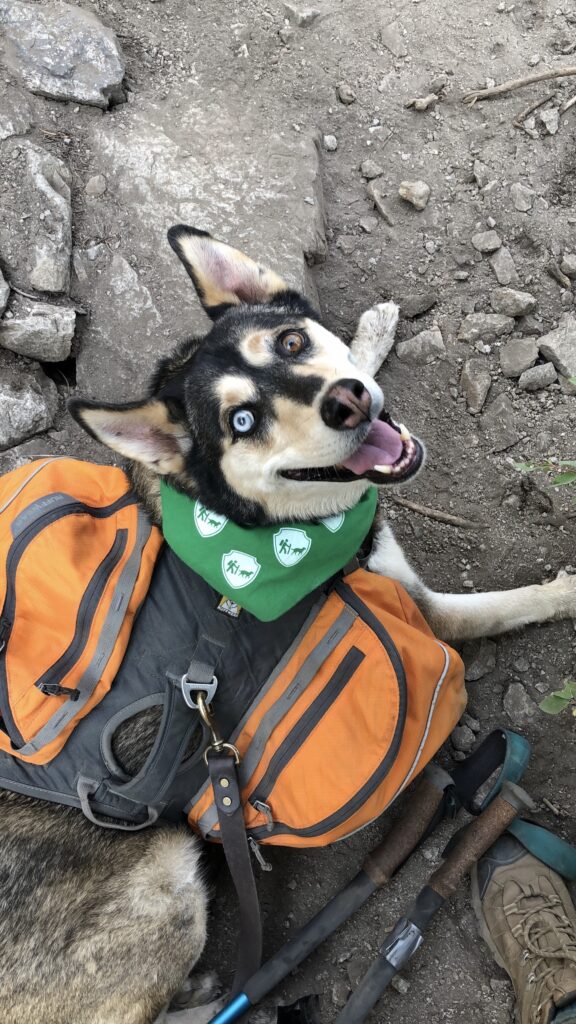

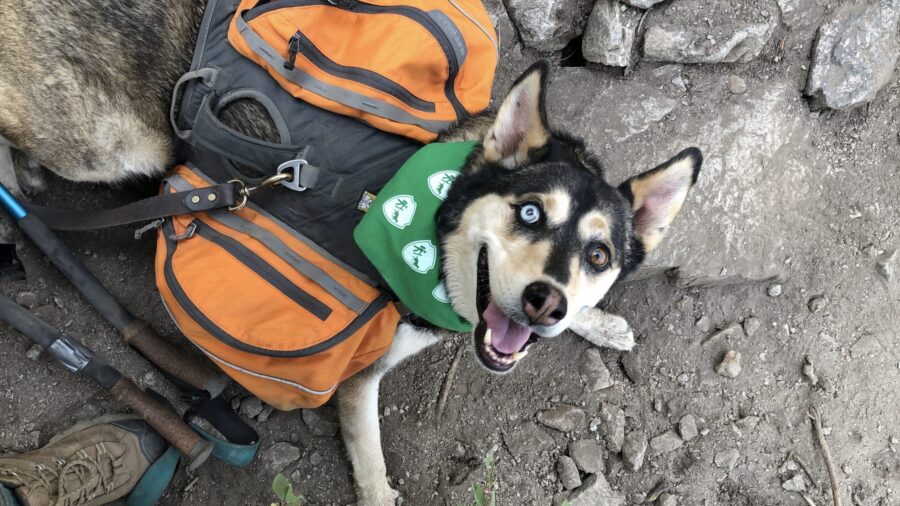


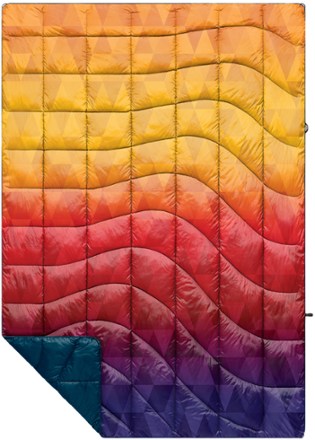

5 Comments
Leave your reply.